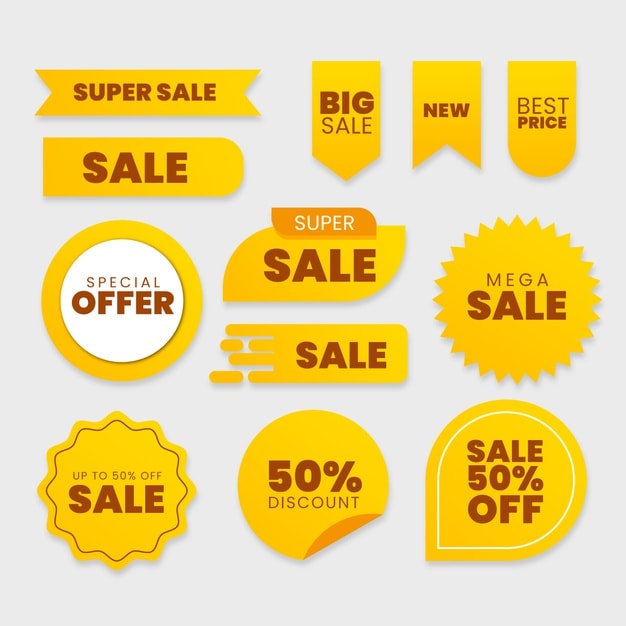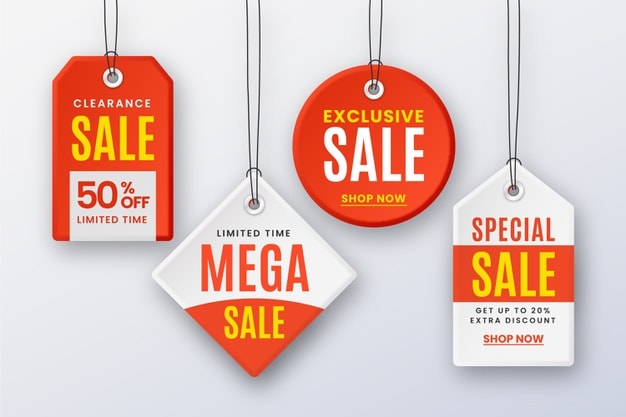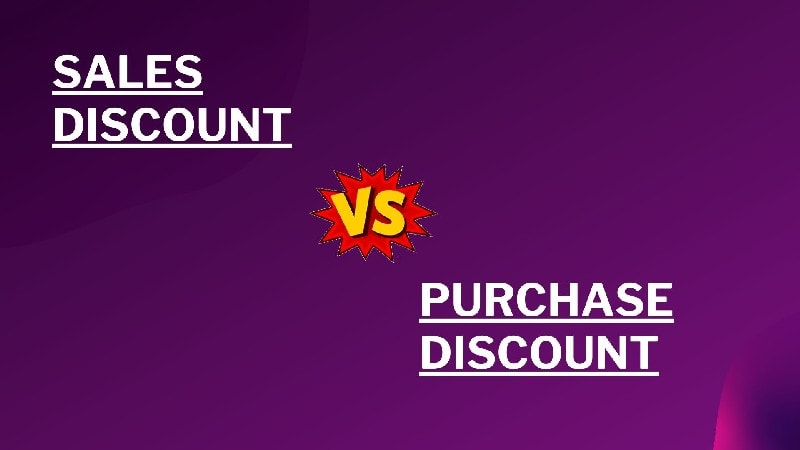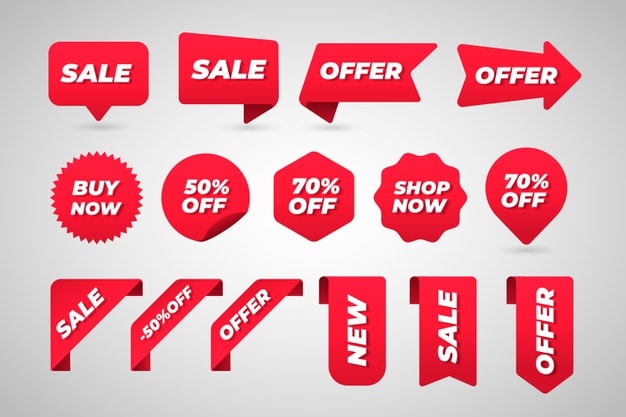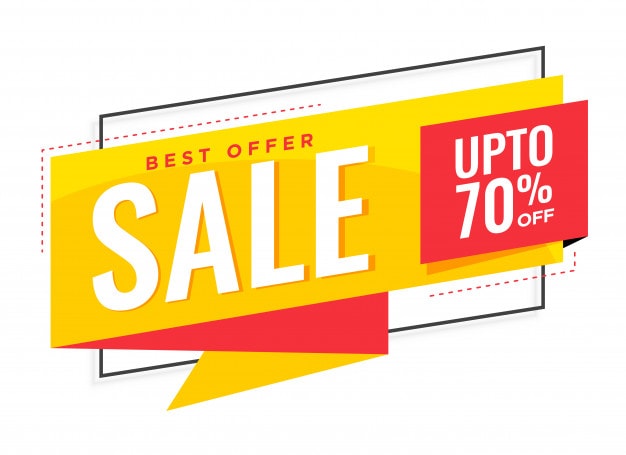Definition: Sales discount is the amount that is reduced by the seller on a product so that the buyers pay less than the actual cost of the product. It is also known as an early payment discount or cash discount.
Let us say a manufacturer sells a product for $500 and the credit terms for payment are 60 days. But if he makes the payment within ten days, there would be a discount of 10%; then the buyer has to pay only $450. But if he pays between 30 – 60 days later there would be no discount.
Table of Contents
Types of Sales Discount
Many types of sales discounts can be provided depending on the product, buyer-supplier relationship, market conditions, and competition. Following are a few common types of sales discount that are given by many sellers:
- Early / Cash discount: It is the discount given to the customers when they pay early. This sales discount is given to encourage customers to pay fast. It usually happens with the resellers when they purchase a product in large quantities from the wholesaler.
- Loyalty discount: this discount is provided to regular or repeat customers for their repeat and continued business.
- Volume discounts: this discount is offered to the customers who purchase a product in a vast quantity at one time.
Factors affecting Sales discount
There are many factors that could affect the sales discount negatively or positively. Following are the factors which affect the sales discount:
1. Payment Terms
Payment terms are significant when it comes to getting a sales discount. The sooner the payment is received by the supplier, the better discount he can offer to the buyer. Immediate payments get the highest possible discount, and late payments get no discounts at all.
2. Buyer-Supplier relation
As important is the duration of the payment equally important is the relation of buyer and seller. If both of them are on good terms, then the buyer can negotiate for a better discount. For this, both of them should agree.
There is a possibility that if the buyer-supplier relation is excellent, then the buyer can avail a discount that is not offered to any other buyer purely based on their relationship.
3. Quantity of purchase
Another factor which affects the sales discount is the quantity of purchase. If buyer-A purchases goods worth $20,000 at one time and get a discount of 18%, then buyer-B can purchase products of $35,000 and ask for more discount.
If the seller has not made blocks of discounts to be offered on a specific purchase, then the highest purchaser can negotiate for the best discount. From the buyer’s point of view, the more he buys, the better discount he gets and from the seller’s point of view the stocks are consumed faster on bulk purchases.
4. Competition
Competitor products also play a crucial role in the discounting of a product. If a competitor is offering a discount on the product which results in a price that is much lower than your product, then you have to provide a sales discount to the customer.
This is done to keep the cost of the product under control. If a competitor is giving a discount on certain special occasions, then you have to follow that trend only if the price is going way down below the amount that you are offering. This is done so that you do not lose the market share and customers.
5. Market condition and Government
Market conditions are equally important when giving a sales discount. If there is inflation in the market, then following the trends, the price of the product will go up, and the discounts will probably go down. On the other hand, if prices of dependent products and commodities increase, then they will affect the discounts of your product.
For example, if the price of glass increases, it will affect the prices of mobile phones which use glass to make screens. Also, government policies may result in increasing or decreasing the prices of the product.
For example, if the import duty of a specific product increases, then the prices of the product increase and the discount go down. If a government policy subsidizes a product, then the sales discounts may increase.
6. Stock availability
If the seller has an ample amount of stock and it is to be liquidated in a short time, then a high discount is offered. The reverse is the case when the stock is very less, and the demand is more in the market. If the product is not available readily, even then there may not be a high sales discount.
Difference between Sales Discount and Purchase Discount
A sales discount is one of the most widely used discounts in the market. It refers to the reduction of the price of the product which the customer may have received for a higher price. There are various reasons for offering a sales discount.
Right from moving to a new store to finishing of the old stock, sales discount offered for numerous reasons. More prominent brands often offer more discounts so that they could be seen as affordable. Other retailers provide a discount simply because they have received a discount when they have purchased.
Purchase discounts are the price reductions which retailers get from their sellers – that is whole sellers. It depends on various factors such as a reduction in the price of raw materials or a bulk discount for early payment.
Advantages
1. Enticing new customers
One of the primary advantages of a sales discount is that they are the best bet to get new customers. Everybody loves discounts, and when their favorite product is on discount, then they will try your product. Sales promotions and discounts are used mainly for those products which are not generating proper revenue or not achieving revenue targets.
Also when the new product or new business launches in the market, then sales discounts are the best way to attract customers.
2. Clearing the inventory
Sales promotion is often used to remove the excess inventory at the end of the season. It is named as the end of the season sale. Even though you may not make a lot of profit; keeping those items unsold is much worse.
Instead, selling them even at breakeven price is better than keeping excess inventory. You will also be clearing storage space in your store, which may cost you money.
3. Cross-selling and upselling
It is during the sales promotion that upselling usually occurs. You can convince the customer to buy an expensive product by paying a little more than the discounted product price.
You can also give special discounts to customers who are buying a lot of products from your store. This will help to spread word of mouth and also generate more customers and more business for you.
4. Strong and fast relationships
When new product launches in the market or when the new store opens in the neighborhood it takes a long time to form relations with customers. Sales discounts help to build those relations faster and more reliable.
The customers are easily diverted from the nearby store to your store depending on the discount that you offer. Once they walk in your store, it is your responsibility to make a relationship and maintain it further so that you can get repeat business from the customers even when the sales discount is not there. Providing short-term incentives to the customers may cost you initially, but in the long run, it is profitable.
Disadvantages
1. Changing the price perception of customer
The idea behind giving a sales discount is to get the customers to purchase your product and tried for the first time. The company expects customer’s Loyalty when such a discount is given.
But if the discount is excessive and frequent, then the customers get used to that price and will never go back to the actual cost of the product. They will always expect the price to remain the same, and it will be challenging to keep the price for a long time since such prices are for a short period.
2. Revenue limitations
The profitability of the company reduces if sales discounts are offered to customers. For example, there are 500 products priced at $10 each. The shopkeeper decides to sell them at $45 each.
That is a generous discount from shopkeeper of $5 each, but that amounts to a discount or loss of $2500 for the company which will never help them achieve their target.
3. Driving customers away
When specific discounts and promotional offers are given to customers, it becomes very cumbersome to control the timing and the nature of the purchase and sales discount.
For example, the customer decides at the very last moment of billing to avail of a discount coupon, which necessitates making changes in the process of billing. Till the invoice happens, the customer queue increases. This will be a significant upsetting factor for many customers who are impatient and who are in a hurry.
You have several examples of the use of discounts in this section of Marketing91: Discount coupons from the best marketing tools.
Liked this post? Check out the complete series on Sales
